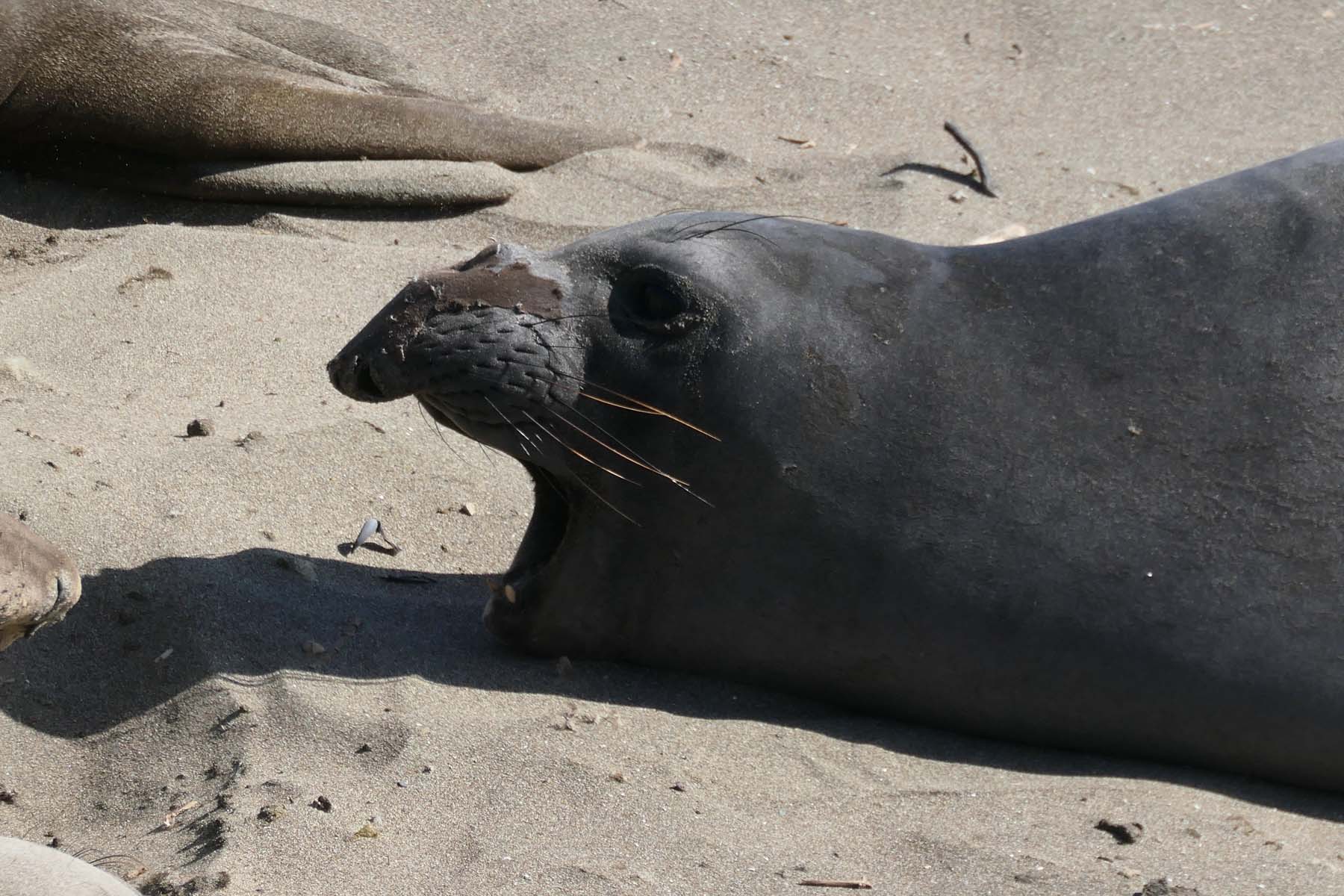When you have been gone for two months the re-entry into everyday life is both wonderful and overwhelming. Being home feels like you belong, a place at once familiar and safe, a comfortable bed to fall into to shake the travel fatigue.


It also clammers for attention to deal with neglected chores – at this time of the year the yard is a sea of weeds, overgrown meadow, last year’s leaves, decks covered with mossy slime. So much to tackle, never mind that a thorough spring cleaning of the house, usually done before Passover, also gave way to more pleasant times spent with a young family, who I now miss deeply. Oh well – all this to explain that I will provide some last photographic narratives of the trip without much content depth this week before we resume the familiar rhythm of the blog next week.

The trip North began along the Pacific coast with an overnight in Cambria, CA, a small town close to a beach that is renowned for elephant seal colonies. Seeing hundreds of them spread out along stretches of rocks and sand is pretty awe inspiring. All the more so when you learn that these humongous creatures are all female and pups – at this time of year the males, larger still, are on their migration routes, as are the juveniles. Northern elephant seals spend about 9 months of the year in the ocean. Most of this time is underwater, diving to depths of about 1,000 to 2,500 feet for 20 to 30 minute intervals with only short breaks at the surface.


It is a clever system of stacked returns – two months for birthing and nursing, another stint for molting for the females, then separate beachings for the males and/or juveniles because there is simply not enough acreage to accommodate them all at once.




While on the beach they do not drink or eat, for months at a time. They do molt, though, which gives them this sickly looking appearance, but is actually a healthy thing. The renewal of a whole skin and short hair layer helps them to get rid of wounds and scars as well as UV light damaged tissue, making for a smoother surface that supports fast swimming.


On land these creatures are gregarious, happy to socialize or spar for practice. Given that there were no males we were spared the view of bloody fighting over mating issues which seems to be habitual and reportedly gory.


The pups are black until they are weaned at 6 weeks, then molt to a shiny silver.


It is close to a miracle that they are still around. In 1884 the subspecies was declared extinct, as so many were hunted for their blubber. But a tiny population of northern elephant seals was rediscovered near Mexico in 1892, a tiny population of northern elephant seals was rediscovered near Mexico, and from those the population bounced back. The animals were protected by law in America and Mexico in the early twentieth century, and now the population numbers 150,000. (Ref.) They have one of the longest migrations of any mammal; some have been recorded traveling over 13,000 miles roundtrip. dangers abound – if they get entangled in fishing gear so they can’t surface for breathing, they are toast.



If they drag the nets for a long time, they get too fatigued to be reproductively successful. An increasing danger, next to noise and plastic pollution, comes from more frequent accidents with ships. The increase in vessel traffic arising from the opening of trans-polar shipping routes (as arctic sea ice continues to decline) is increasing the risk of vessel strikes.
The ones on the beach seemed to be thoroughly in the moment, lazing in the late afternoon sun,

occasionally flipping sand over their bodies (science is speculative: might be used to protect against sun damage,) or taking a short dive.

I was in awe.

Here is a version of Whitacre’s “Seal Lullaby.”

